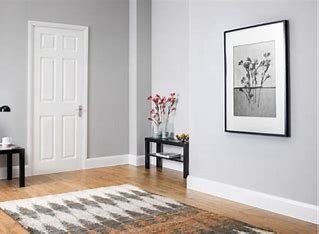Introduction
Skirting boards, also known as baseboards, are essential elements in interior design that serve both functional and aesthetic purposes. They provide a neat finish along the base of walls, concealing gaps and protecting the bottom of walls from damage. If you’re looking for high-quality skirting boards, Screwfix is a popular choice among homeowners and professionals. In this comprehensive guide, we’ll delve into the world of Screwfix skirting boards, exploring their types, materials, installation, and frequently asked questions.
Types of Screwfix Skirting Boards
Screwfix offers a wide range of skirting boards to suit different styles and preferences. Here are some of the most common types:
MDF Skirting Boards: Made from Medium-Density Fiberboard, these boards are affordable and versatile. They can be painted or wallpapered to match your interior decor.
Primed MDF Skirting Boards: Pre-primed MDF boards save you time and effort as they are ready for painting.
PVC Skirting Boards: PVC (Polyvinyl Chloride) skirting boards are moisture-resistant and easy to clean, making them ideal for bathrooms and kitchens.
Wooden Skirting Boards: For a more traditional look, wooden skirting boards offer a natural and warm feel. Screwfix provides various wood species, such as pine, oak, and beech.
Decorative Skirting Boards: If you’re looking to add a touch of elegance to your space, decorative skirting boards with intricate designs or moldings are available.
Materials and Finishes
The material and finish of your skirting boards can significantly impact the overall appearance of your room. Screwfix offers a variety of options to choose from:
MDF: MDF is a popular material due to its affordability and versatility. It can be painted or wallpapered to match your desired style.
PVC: PVC is a durable and moisture-resistant material that is often used in bathrooms and kitchens. It comes in various colors and finishes.
Wood: Wooden skirting boards provide a natural and warm look. They can be stained, painted, or left unfinished for a rustic appearance.
Decorative: Decorative skirting boards are often made from MDF or wood and feature intricate designs or moldings. They might provide a touch of sophistication to any area.
Choosing the Right Skirting Board
When selecting skirting boards, consider the following factors:
Room Style: The skirting boards should complement the overall style of your room. For example, modern rooms may suit sleek PVC boards, while traditional rooms may benefit from classic wooden skirting.
Material: The material should be chosen based on durability, moisture resistance, and ease of maintenance.
Finish: The finish should match your desired aesthetic. Options include painted, stained, or unfinished.
Height: The height of the skirting boards should be consistent throughout the room. A common height is 4 inches (100mm), but you can choose taller or shorter boards depending on your preference.
Installation Tips
Installing skirting boards can be a DIY project, but it requires careful measurement and preparation. The following advice will help to guarantee a good installation:
Measure Accurately: Measure the length of each wall and ensure the skirting boards are cut to the correct size.
Prepare the Walls: Remove any baseboards or trim that are already in place. Fill any gaps or holes in the walls.
Apply Adhesive: Use a suitable adhesive, such as construction adhesive or liquid nails, to secure the skirting boards to the walls.
Secure with Brackets: For added support, consider using brackets or screws to fix the skirting boards to the wall studs.
Cut Miters: Carefully cut the skirting boards at corners to create a clean and seamless finish.
Caulk and Fill: Caulk any gaps between the skirting boards and the walls. Use wood filler to cover any nail holes or flaws.
Additional Considerations for Screwfix Skirting Boards
While the previous sections covered the basics of Screwfix skirting boards, there are a few additional factors to consider:
Accessibility and Safety:
Ramps and Thresholds: If you have mobility issues, ensure that the skirting boards do not create any obstacles. Consider using ramps or thresholds to smooth out transitions.
Fire Safety: Choose skirting boards made from materials that are fire-resistant, especially in areas with high fire risks.
Environmental Considerations:
Sustainable Materials: If you’re environmentally conscious, opt for skirting boards made from sustainable materials, such as recycled wood or bamboo.
Low VOC Paints: When painting your skirting boards, use low-VOC (volatile organic compound) paints to reduce indoor air pollution.
Maintenance and Cleaning:
Cleaning: The cleaning requirements vary depending on the material. PVC boards can be wiped clean with a damp cloth, while wooden boards may require more regular cleaning and maintenance.
Repainting: If your skirting boards become damaged or discolored, you can repaint them to restore their appearance.
DIY vs. Professional Installation:
Skill Level: If you’re comfortable with DIY projects, installing skirting boards can be a rewarding experience. However, if you’re unsure about your skills, consider hiring a professional for a neat and efficient installation.
Time and Cost: Installing skirting boards yourself can save you money, but it may take more time. Before choosing, consider the advantages and disadvantages.
Frequently Asked Questions
How do I measure for skirting boards?
Measure the length of each wall and the height from the floor to the desired position of the skirting boards.
Can I install skirting boards myself?
Yes, you can install skirting boards yourself. However, it requires basic DIY skills and tools.
Which equipment is required for installing skirting boards?
You’ll need a measuring tape, saw, pencil, level, adhesive, caulk, and possibly a hammer and nails.
How do I cut skirting boards at corners?
Use a miter saw to cut the skirting boards at a 45-degree angle to create a seamless corner joint.
Conclusion
Screwfix offers a wide range of skirting boards to suit various styles and preferences. By carefully considering the type, material, finish, and installation process, you can choose the perfect skirting boards to enhance the appearance of your home. Whether you’re a seasoned DIYer or a beginner, following the tips and information provided in this guide will help you achieve a professional-looking result.
To read more, click here.

Leave a Reply